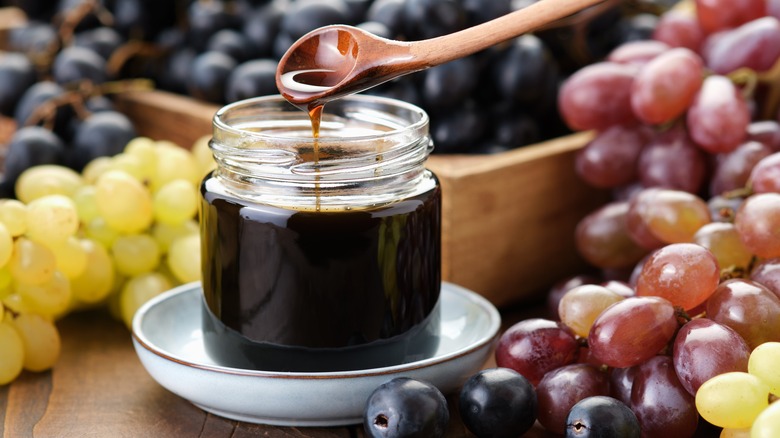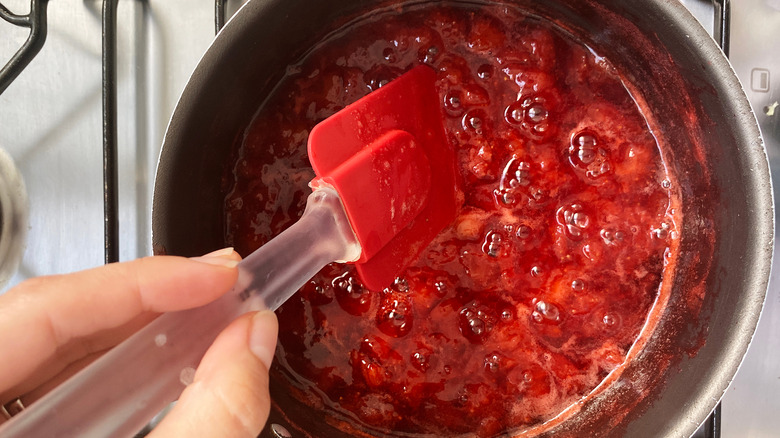How Long Can You Store Homemade Fruit Syrup?
Fruit syrup — whether it's strawberry, peach, or even lime syrup — is an easy way to elevate everything from shave ice to craft soda. The best part is that it is easy to make at home, allowing for creative twists and offering a great way for you to use up any leftover fresh fruit at the end of each season. As with any other homemade condiment, however, it is important to be aware of how long the syrup keeps to prevent spoilage and avoid exposing yourself to foodborne pathogens. Depending on the recipe and how you store the syrup, it can last anywhere from a few weeks to a year.
The primary factor that will impact the shelf life of your syrup is how it is stored. If you are making it for a quick recipe or event, popping it into the fridge for a few days is just fine, as refrigerated syrups generally last a few weeks (though the flavor is at its freshest during that first week). For an extended shelf life, opt instead for storing the syrup in the freezer, where it can last up to six months. For the ultimate, shelf-stable syrup, store it in a sanitized and sealed jar that is located in a cool, dry place. This way, it will last for up to a year.
How to maximize the life of your fruit syrup
One way to further stretch the viability of your fruit syrup is by altering its concentration — or the ratio of sugar to water in the syrup. A traditional syrup has a 1-to-1 ratio and will last for about a month with basic refrigeration. However, if you make a rich syrup by increasing the sugar to water ratio to 2-to-1, you can increase this time frame significantly. It can be expected to last for about six months in the fridge.
Of course, no recipe or storage method is perfect, and you should still keep an eye out for signs of spoilage whenever you are enjoying your fruit syrup to keep yourself from ingesting anything unpleasant or dangerous to your health. Keep an eye out for any presence of mold, yeast, or any smell that you would not expect from a syrup, such as a vinegary or fermented odor, as well as drastic changes in color, texture, or flavor. At the end of the day, if you are not sure you should be eating it, it is always best to err on the side of caution.

